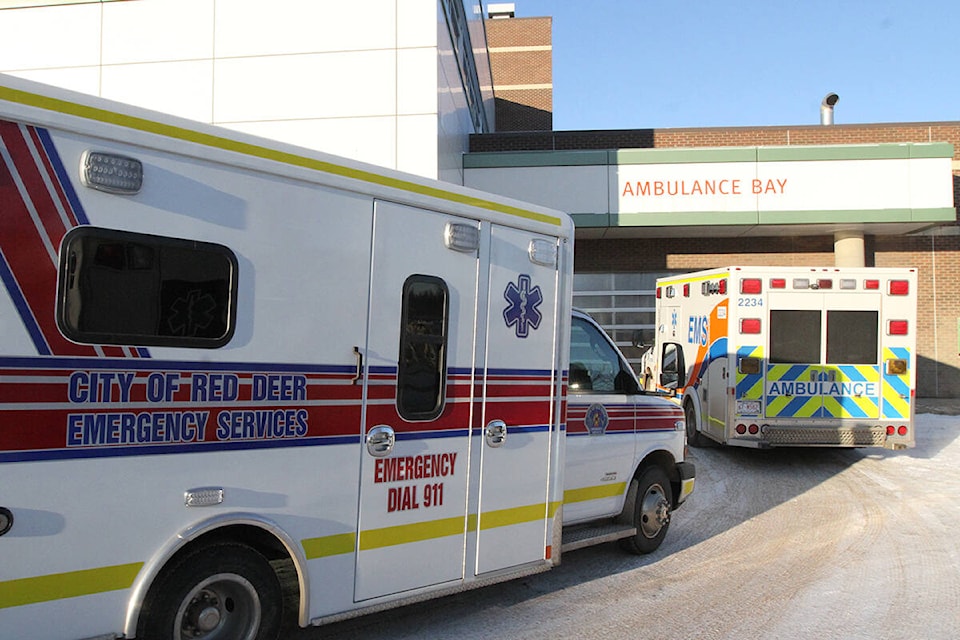An “unprecedented increase” in emergency calls during this frigid weather meant many Central Alberta communities were momentarily without access to local ambulances on Monday.
The Health Sciences Association of Alberta issued two “red alerts” through social media.
“What happens if you call for help and no one comes?” the HSAA stated on Facebook at 4:30 p.m. Monday, notifying the public in Lacombe, Rimbey, Eckville, Sylvan Lake, and Rocky Mountain House that no local ambulances were available if someone called 911. All were out on other calls.
The association also Tweeted an alert for Red Deer at 10:25 a.m. on Monday, stating that no EMS was available in the city.
According to Alberta Health Services, emergency medical services continue to see an unprecedented increase in emergency calls — up to 30 per cent — “particularly during the cold weather snap in recent days.”
Freezing weather-related calls have increased, and so have staff illness and fatigue “contributing to challenges,” stated an AHS spokesperson.
But she added these red alerts are no cause for alarm, because if all local ambulances are busy on calls, other ambulances can be brought in from neighbouring communities.
Anyone needing emergency care will receive it, added the spokesperson. “We are ensuring that the most critical patients are prioritized for receiving immediate care.”
According to AHS, code reds usually last only a few seconds to a couple of minutes and end when resources become free or are deployed from other areas.
The AHS spokesperson said this was briefly the case on Monday in central Alberta. But as AHS operates a “borderless dispatch system,” the closest available ambulance will always respond.
The EMS system is monitored by AHS in real time, and is in a constant state of flux, as ambulances are sent out to calls, arrive at hospitals, or as staff come on or go off shift. “System adjustments are made minute by minute to make the best use of the existing resources.”
This explanation hasn’t reassured the HSAA, which has been running a series of these red alerts since August, to make the public aware of the situation.
In October, when 135 HSAA alerts had already been declared, HSAA president Mike Parker explained “decisions by Alberta Health Services and inaction by the current government mean it’s now a game of chance if there will be an ambulance when you or your family need it most.
“What we aren’t being told is the number of times there is no ambulance available to respond, or that when one is available it could be coming from another city or town — 30 minutes or even an hour away,” stated Parker last fall.
To try to improve the situation, Alberta Health Services has brought on additional emergency staff and ambulances and is filling 100 paramedic positions across the province, said the AHS spokesperson.
EMS is also deploying supervisors to some emergency calls, is delaying some non-urgent transfers, “and also working closely with hospital teams to ensure timely flow through our emergency departments.
“EMS is also offering overtime to staff who are willing. EMS is also working toward finding ways to transport patients to alternate destinations instead of hospitals, which can help return ambulances to service significantly faster.”
Meanwhile, the City of Red Deer and other Alberta municipalities have been calling for an independent third-party review of the provincial ambulance system to determine whether it’s living up to professional standards.
